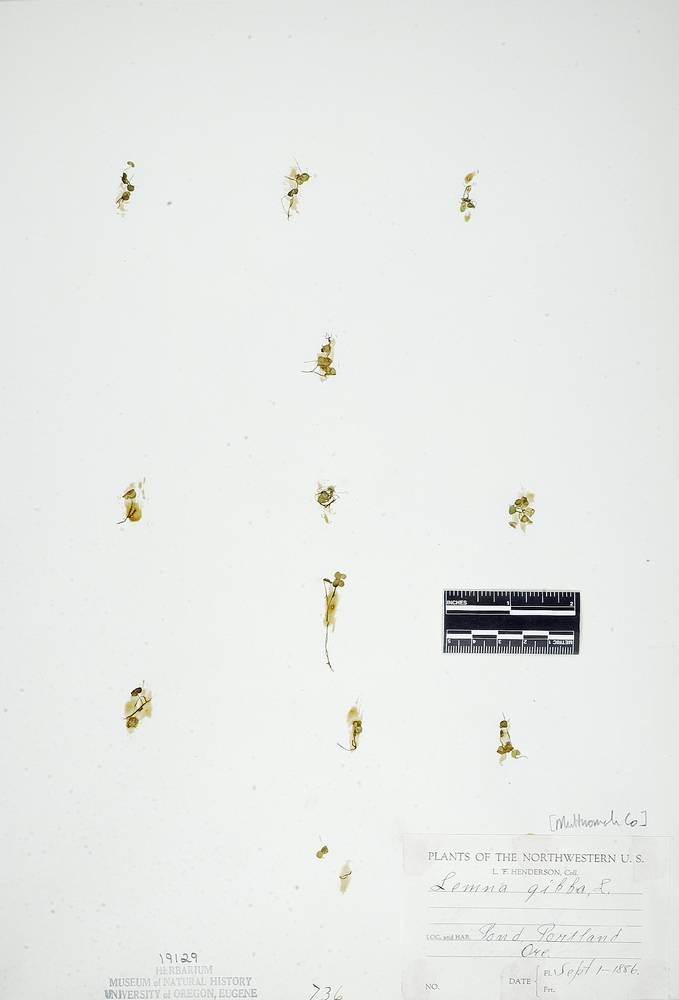
Plant bodies floating on the surface, widely elliptic to round, (1)3–6(8) mm long, 1–1.5 times longer than wide, generally in clusters of 2 or 3 (many), veins 4–5; lower surface usually gibbous (convex or inflated) with enlarged air spaces, green, usually with a reddish margin; upper surface green (sometimes reddish) and smooth, with a midline ridge.
Roots up to 15 cm long.
Turions absent.
Fresh or brackish water. 1300–2100 m. ECas, WV. CA, NV; east to NE, south to TX, Mexico; South America; Africa, Eurasia. Native.
as described under Lemna gibba
Roots to 15 cm, tip mostly rounded; sheath not winged. Stipes white, thin, often decaying. Fronds floating, 1 or 2--5 or more, coherent in groups, obovate, often gibbous, 1--8 mm, 1--1.5 times as long as wide, margins entire; veins (3--)4--5(--7) (all originating from node), greatest distance between lateral veins near or distal to middle; papillae often indistinct; upper lower surface sometimes red colored, coloring beginning from margin, lower upper surface occasionally with distinct red spots beginning from margins near apex; largest air spaces longer than 0.3 mm; distinct turions absent. Flowers: ovaries (1--)2--7-ovulate, utricular scale with narrow opening at apex. Fruits 0.6--1 mm, laterally winged. Seeds with 8--16 distinct ribs, falling out of fruit wall after ripening. 2n = 40, 42, 44, 50.Flowering (rather frequent) spring--fall. Eutrophic, quiet waters in temperate regions with mild winters; 0--1900 m; Ariz., Calif., Ill., Nebr., Nev., N.Mex., Tex., Wyo.; northern Mexico; South America; Eurasia; Africa; Atlantic Islands.